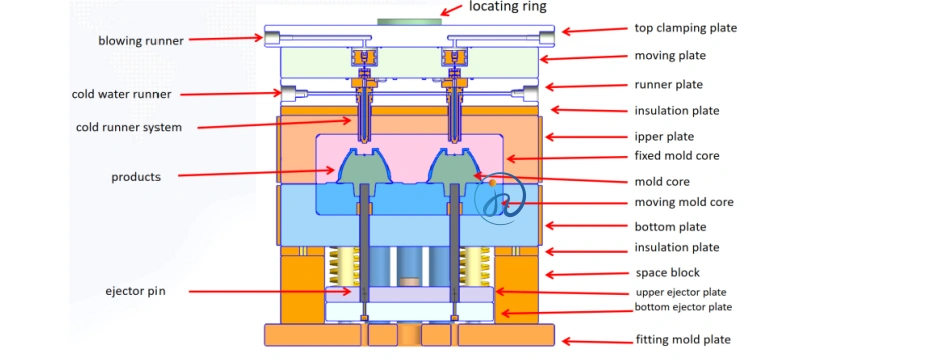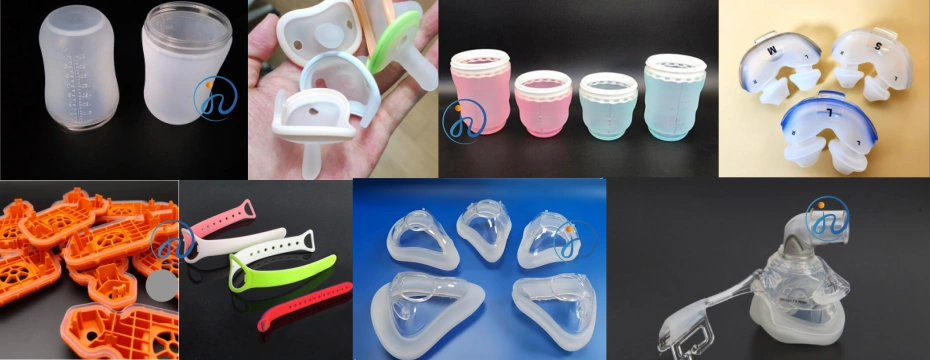Table of Contents
ToggleLiquid silicone rubber (LSR) has revolutionized manufacturing with its versatility, durability, and precision. One of the most common questions engineers, designers, and product developers ask is: How thin can liquid silicone products be made? The short answer is that liquid silicone products can be manufactured with thicknesses as low as 0.2 mm (0.008 inches), and in some specialized cases, even thinner. However, achieving such thin dimensions requires advanced manufacturing techniques, careful material selection, and a deep understanding of the factors that influence production.

In this comprehensive guide, we’ll explore the limits of thinness for liquid silicone products, the key factors affecting their manufacturing, and the applications where ultra-thin silicone components are critical.
Understanding Liquid Silicone Rubber (LSR)
Liquid silicone rubber is a high-purity, two-part platinum-cured elastomer with exceptional thermal stability, flexibility, and biocompatibility. Its low viscosity in an uncured state allows it to fill intricate molds, making it ideal for producing complex and ultra-thin parts. Unlike solid silicone, LSR is injected into molds under high pressure, enabling the creation of exceptionally fine features.
How Thin Can Liquid Silicone Products Be?
The minimum thickness achievable for liquid silicone products typically ranges from 0.2 mm to 0.5 mm. In controlled environments with specialized equipment, manufacturers can even produce layers as thin as 0.1 mm. However, the actual achievable thickness depends on several factors:
- Part Design and Geometry: Simpler shapes allow for thinner walls. Complex designs with undercuts or deep cavities may require slightly thicker sections to ensure structural integrity.
- Mold Design and Precision: High-precision molds with polished surfaces are essential for producing ultra-thin silicone parts. Any imperfection in the mold can lead to filling issues or part failure.
- Material Properties: The viscosity and flow characteristics of the LSR formulation affect how well it can fill thin mold sections. Low-viscosity LSR is preferred for thin-walled applications.
- Injection Molding Process: Parameters like injection speed, pressure, and temperature must be optimized to avoid air traps, incomplete filling, or curing issues.

Key Factors Influencing Thinness in Liquid Silicone Products
1. Material Selection and Viscosity
Low-viscosity LSR grades flow more easily into thin mold cavities, enabling the production of finer features. Manufacturers often customize LSR formulations to achieve the desired flow properties without compromising mechanical strength.
2. Mold Design and Manufacturing
The mold must be meticulously designing with:
- Precision cavities to ensure consistent wall thickness.
- Optimal gate and vent placement to facilitate air escape and prevent voids.
- High-quality surface finishes to reduce friction and improve flow.

3. Injection Molding Techniques
Advanced techniques like micro-injection molding and vacuum-assisted molding help achieve ultra-thin dimensions by ensuring complete cavity filling and minimizing air entrapment.
4. Curing Process
LSR cures quickly under heat, but ultra-thin sections may require adjusted curing times and temperatures to prevent overheating or under-curing.
Applications of Ultra-Thin Liquid Silicone Products
Ultra-thin LSR components are using in industries where precision, flexibility, and reliability are critical:
- Medical Devices:
- Thin diaphragms for pumps and valves.
- Seals and gaskets for minimally invasive surgical instruments.
- Protective coatings for implants and sensors.
- Electronics:
- Conductive seals for EMI shielding.
- Thin insulating layers for flexible circuits.
- Waterproof membranes for wearable devices.
- Automotive:
- Sensors and seals for fuel systems.
- Vibration-damping components.
- Consumer Goods:
- Thin, flexible seals for kitchenware.
- Comfortable, hypoallergenic wearables.

Challenges in Manufacturing Thin Liquid Silicone Products
Producing ultra-thin LSR components isn’t without challenges:
- Filling Issues: Incomplete filling can occur if the LSR doesn’t flow evenly.
- Part Handling: Thin parts are delicate and require careful demolding and handling.
- Quality Control: Ensuring consistency in wall thickness requires rigorous inspection, often using laser scanning or optical measurement systems.
Best Practices for Designing Thin-Walled LSR Products
- Collaborate Early with Manufacturers: Engage with experienced LSR suppliers during the design phase to optimize part geometry and material selection.
- Simplify Geometry: Avoid sharp corners and complex features that hinder flow.
- Use Draft Angles: Incorporate slight draft angles in molds to ease demolding.
- Prototype and Test: Validate designs with prototypes to identify potential production issues.
Future Trends: Pushing the Limits of Thinness
As technology advances, manufacturers are continuously pushing the boundaries of how thin liquid silicone products can be made. Innovations in material science, mold manufacturing, and process control are enabling thinner, stronger, and more complex LSR components for next-generation applications.
Conclusion
Liquid silicone products can be made incredibly thin—down to 0.2 mm or even less—with the right materials, tools, and expertise. Whether for medical, electronic, automotive, or consumer applications, ultra-thin LSR components offer unmatched performance and reliability. By understanding the factors that influence thinness and working with skilled manufacturers, designers can leverage the full potential of liquid silicone rubber to create innovative products.

If you’re exploring the possibilities of thin liquid silicone products for your project, consult with an experienced LSR manufacturer to ensure success.